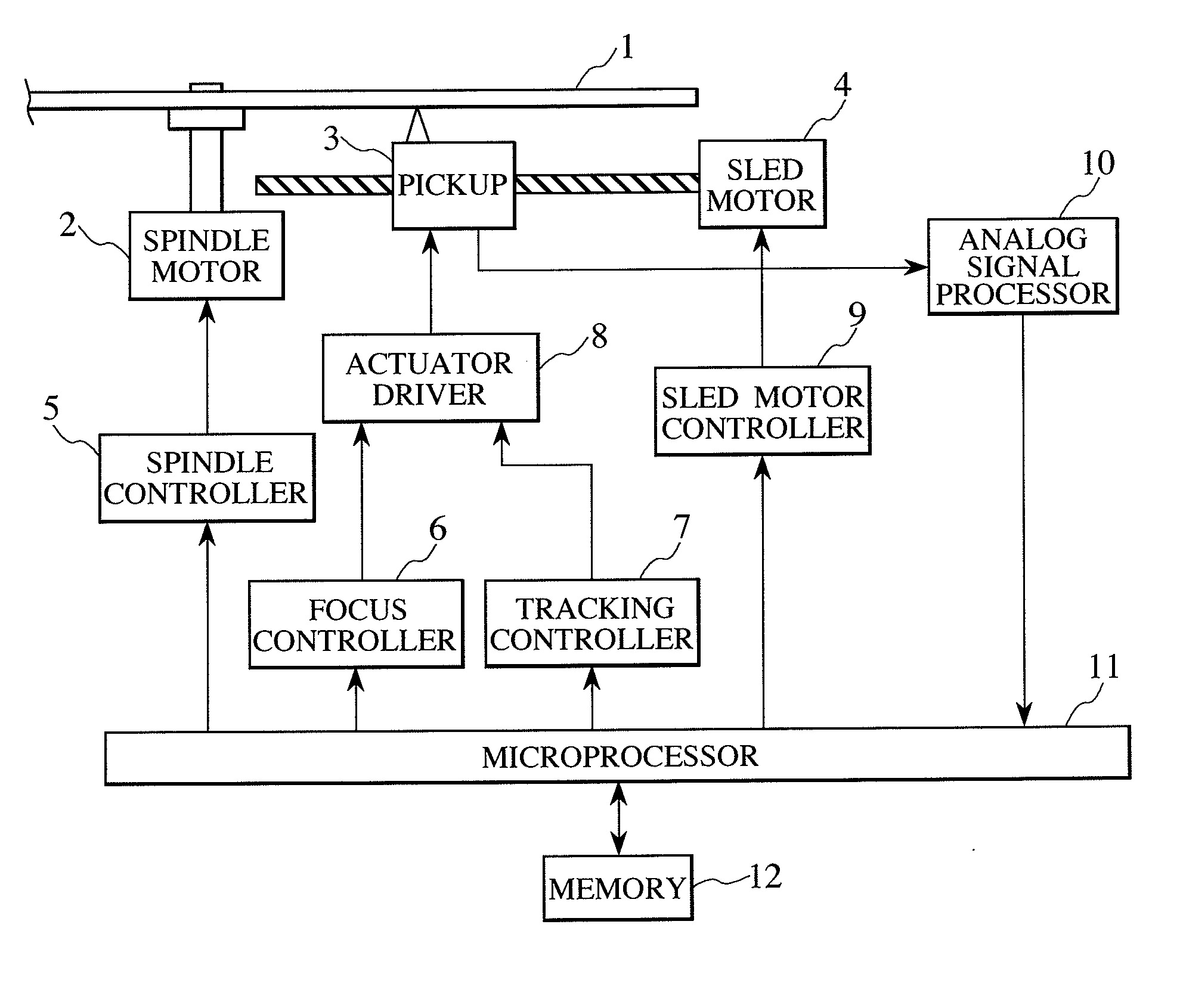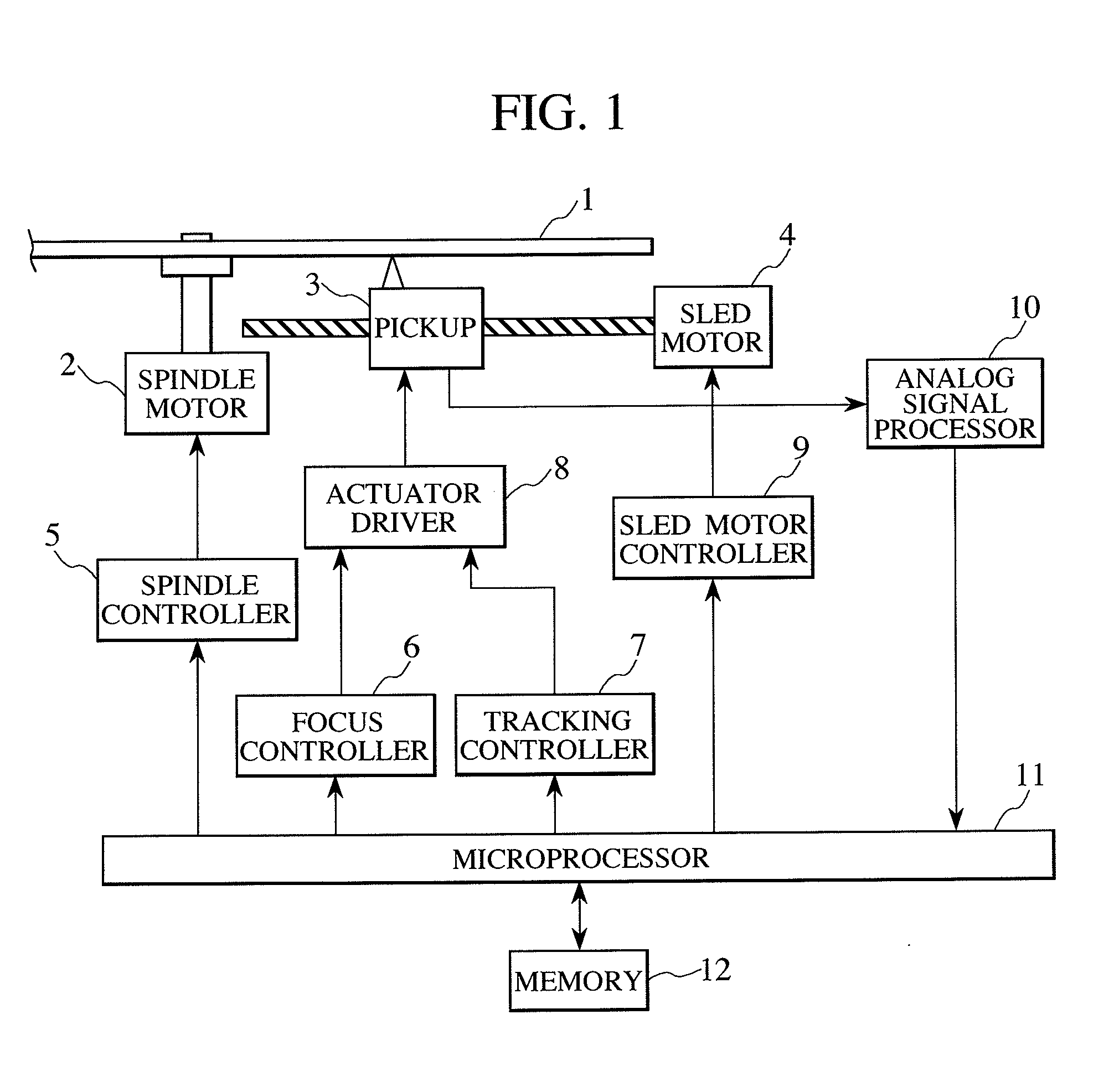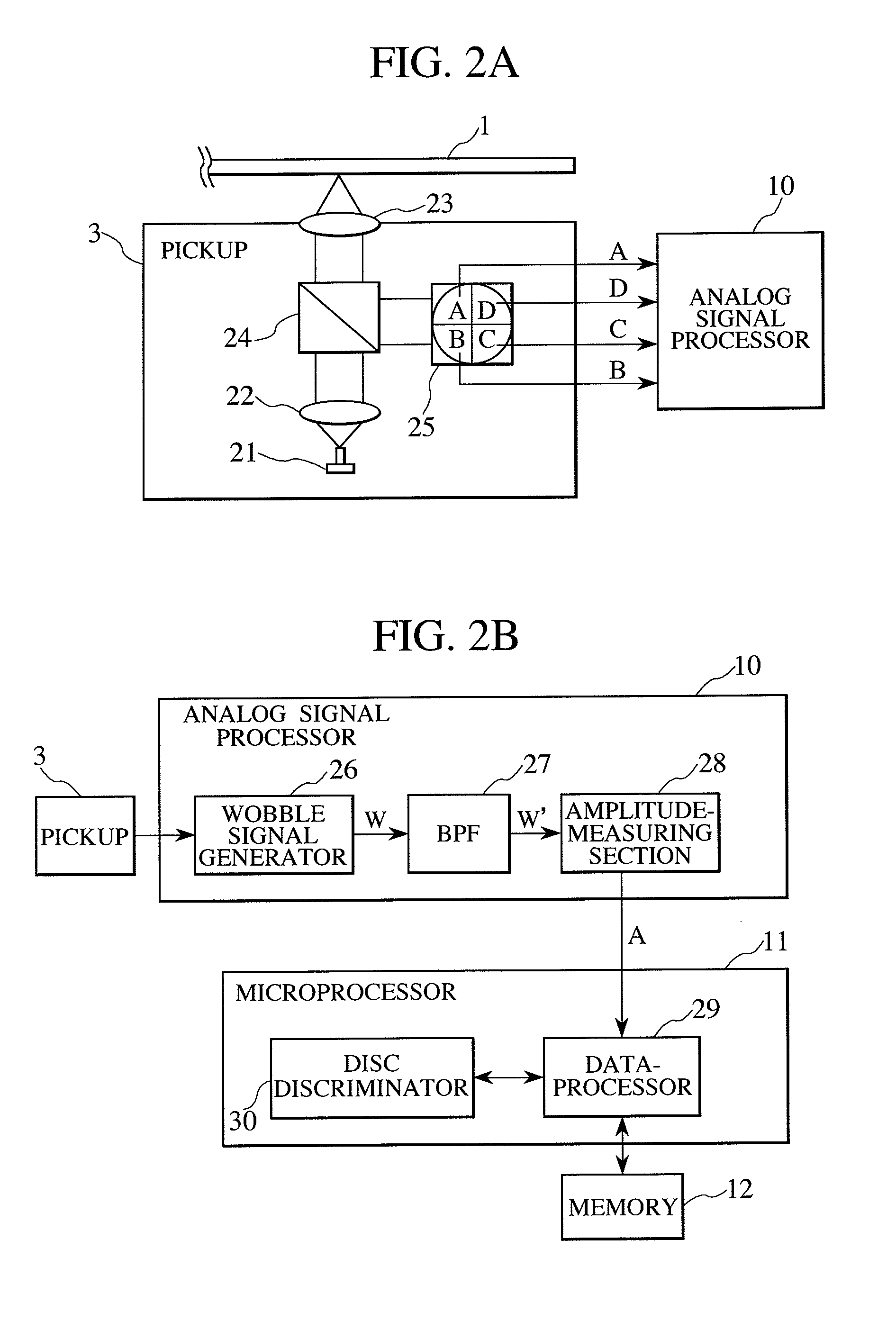Optical Disc Apparatus and Method for Discriminating Optical Disc
a technology of optical discs and apparatuses, applied in the field of optical discs, can solve the problems of discs not having wobble, deteriorating the s/n ratio of wobble signals to be detected, and increasing internal noise of circuits, so as to minimize the delay in the setup process, reduce disc discrimination errors, and improve the accuracy of wobble signals
- Summary
- Abstract
- Description
- Claims
- Application Information
AI Technical Summary
Benefits of technology
Problems solved by technology
Method used
Image
Examples
first embodiment
[0022]FIG. 1 is a block diagram showing an optical disc apparatus of the present invention.
[0023]The optical disc apparatus rotates an optical disc 1 using a spindle motor 2, then irradiates the optical disc 1 with laser light from a pickup 3, and reads out data using the resulting return light. Also, moving the pickup 3 in a radial direction by means of a sled motor changes a location of the data to be read out. The return light that has been input to the pickup 3 is converted into electrical signals, which are then sent to an analog signal processor 10 to reproduce the data (information) and to generate a tracking error (TE) signal, a focus error (FE) signal, and more. A microprocessor 11 calculates control quantities for the spindle motor 2, the pickup 2, and the sled motor 4, from these signals and sends control signals to a spindle controller 5, a focus controller 6, a tracking controller 7, and a sled motor controller 9. After receiving the associated control signal, each of t...
second embodiment
[0034]FIG. 4 is a flowchart showing a second embodiment that is an example of a disc discrimination method based on the present invention. This example uses an N number of BPFs in addition to standard BPF data setting.
[0035]In step S200, a mounted disc is rotated and after optical beam irradiation, the resulting return light signals are input to start disc discrimination.
[0036]In step S201, the central frequency “f” of the BPF 27 is set to equal the wobble frequency f0 (standard setting).
[0037]In step S202, amplitude A0 of a filtered signal is measured by the amplitude-measuring section 28 and the measured value is saved in the memory 12.
[0038]In step S203, n=1 is assigned as a counter value.
[0039]In step S204, the central frequency “f” of the BPF 27 is changed to fn (initially, n=1) that is different from the wobble frequency f0. For example, the central frequency is set at equal intervals in accordance with fn=(n+1)×f0. Needless to say, the central frequency may be set at unequal ...
third embodiment
[0046]FIG. 5 is a flowchart showing a third embodiment that is yet another example of a disc discrimination method. This example uses the number of BPFs that is associated with N=1 in FIG. 4.
[0047]In step S300, a mounted disc is rotated and after optical beam irradiation, the resulting return light signals are input to start disc discrimination.
[0048]In step S301, the central frequency “f” of the BPFs is set to equal the wobble frequency f0 (standard setting).
[0049]In step S302, amplitude A0 of a filtered signal is measured and the measured value is saved in the memory.
[0050]In step S303, the central frequency “f” of the BPFs is changed to f1 different from the wobble frequency f0. For example, “f” is changed so that f1=2×f0.
[0051]In step S304, amplitude Al of another filtered signal is measured and the measured value is stored in the memory.
[0052]In step S305, the amplitude levels A0 and A1 are read out from the memory for comparison. If the two values differ by the threshold level...
PUM
| Property | Measurement | Unit |
|---|---|---|
| wobble frequency f0 | aaaaa | aaaaa |
| wobble frequency f0 | aaaaa | aaaaa |
| frequency | aaaaa | aaaaa |
Abstract
Description
Claims
Application Information
 Login to View More
Login to View More - R&D
- Intellectual Property
- Life Sciences
- Materials
- Tech Scout
- Unparalleled Data Quality
- Higher Quality Content
- 60% Fewer Hallucinations
Browse by: Latest US Patents, China's latest patents, Technical Efficacy Thesaurus, Application Domain, Technology Topic, Popular Technical Reports.
© 2025 PatSnap. All rights reserved.Legal|Privacy policy|Modern Slavery Act Transparency Statement|Sitemap|About US| Contact US: help@patsnap.com



